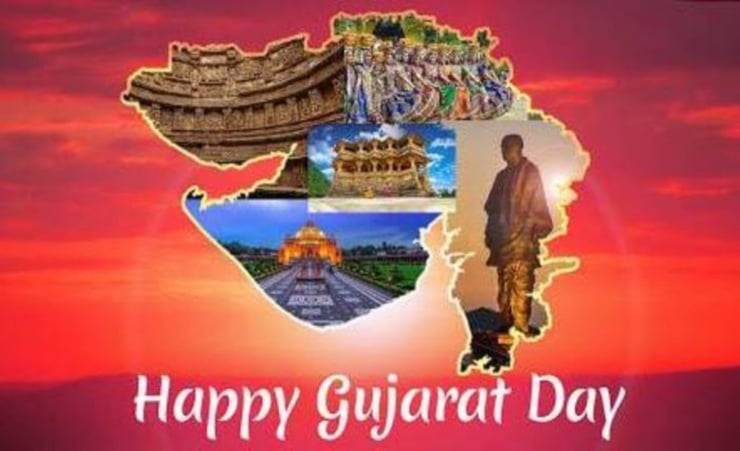Gujarat has come a long way in 63 years

It was May 1, 1960, when Gujarat as a separate state came into being, and it also marked the foundation day of the state of Maharashtra. The two came into existence according to the Bombay Reorganisation Act.
Jivraj Mehta of the Indian National Congress became the state’s first chief minister. Majority of the newspapers at the time were sceptical about Gujarat’s prospects of prosperity, and predicted the western state would struggle financially. But due to the industrious nature of its people, Gujarat is today considered one of India’s leading states as far as economic indicators are concerned.
It is also worth mentioning that non-resident Indians (NRIs) of Gujarati origin spread all over the world have also played a pivotal role in its development.
The state is spread over an area of 196,024 square killometres and has a population of nearly 64 million people. Gujarat is strategically located with India’s longest coastline of 1,600km and acts as a natural gateway to the rich land-locked northern and central hinterland.
The state is renowned for its beaches, temples towns, historic capitals, wildlife sanctuaries, hill resorts, sculptures, handicrafts, arts and festivals.
Home to about 4.99 per cent of India’s population, the state accounts for nearly 8.36 per cent of the country’s gross domestic product in 2021, according to a statement by the Press Information Bureau (Research Unit) in 2022.
Gujarat was also a leading state so far as renewable energy is concerned. As of March 2021, nearly 12.09 per cent of the installed grid capacity of renewable energy came from the state.
It was reportedly also the first power surplus state in the country. In a ranking conducted in 2020, out of 19 power distribution companies across India, distributors in Gujarat ranked top four on key
operational and financial performance indicator.
The state was also a leader in exports, accounting for nearly 20 per cent of India’s aggregate exports in 2021, with the ports in Gujarat being the most important contributors.
Its share in the country’s industrial output was nearly 17.44 per cent in 2018-19, thus making it an industrially developed state. Gujarat is also the fourth largest state when it comes to milk production, accounting for nearly 7.7 per cent of the milk production in the country in 2020.
Gujarat was also ranked first in the Good Governance Index 2021 report.
It attracted foreign direct investment (FDI) worth 1.63 lakh crore Indian rupees in 2020-21, which was about 37 per cent of the total FDI the country received that fiscal year. In terms of National Ease of Doing Business rankings, the state has consistently ranked among top five leading Indian states.
Seventeen chief ministers have had the privilege of governing the state of Gujarat. In the book ‘Modi@20: Dreams Meet Delivery’, economist Surjit S Bhalla noted the tenure of Prime Minister Narendra Modi, who served as the state’s chief minister from 2001 to 2014, is considered the most productive as far as the overall development of the state is concerned.
“Gujarat under Modi performed significantly better on all the living standard indicators than Gujarat not under Modi,” he wrote, further adding, “Per capita growth in state domestic product - this is considered to be the most important test of performance - during his tenure, growth exceeded others by a hefty margin (1.7 per cent per year over other Big states; and 1.4 per cent a year over comparable states.) In the earlier non-Modi period, Gujarat lagged comparable states by 0.3 per cent a year.”




